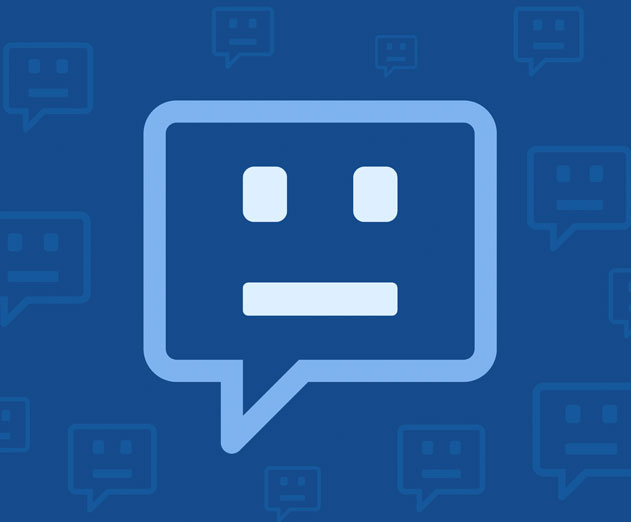Marketing & Promotion
Is Your Brand Developing a ChatBot Strategy
Friday, June 17, 2016

|
Brian Heikes |
Marketers and Customer Service professionals are now paying a lot of attention to ChatBots. Whereas the web, mobile marketing and smartphone apps were at one point the “next big thing”, ChatBots are now becoming a pervasive part of a brand’s digital toolkit.
“Bots”, as they’re known, are being talked about as the next evolution of messaging interaction between brands and consumers. The excitement, of course, is the fact that Bots have the potential of driving a real-time, one-to-one interaction that is highly intelligent and conversational. Thus, this messaging channel has the potential to lead to a new form of “conversational commerce”, where brands can elevate their ability to engage with consumers on a more personal level.
In order to successfully execute on this, Bots will need to have intelligence on the person they’re conversing with as well as sufficient capabilities to assist that person with the task they need to complete – otherwise Bots will quickly turn into the next version of the hated Voice Response systems that are blockers to customer service at many companies.
Messaging applications are becoming a significant strategy for brands simply because it's how consumers are communicating today. According to an article in The Economist, over 2.5 billion people have installed at least one messaging app on their smartphone, and messaging has replaced phone calls as the communication medium of choice for millennials. Because of the penetration into consumers’ daily lives, these platforms now provide an outstanding medium through which brands can reach their customers.
While Bots hold amazing potential, this interaction channel remains in its infancy. Companies considering the development of Bots don’t yet know the true ramifications and response from consumers who may be weary of talking to a “computer” on an individual level. The big question is how to cut through the hype to ensure that the Bots developed for your brand exceed the expectations of your customers to provide an experience that surprises and delights them.
If your brand is planning a bot strategy, here are some important considerations to keep in mind:
Conversational Commerce Is Now
Conversational commerce has been very much in the news lately. Messaging platforms, Artificial Intelligence, and Virtual Assistants (all of which are critical components to a successful Bot play) have been widely discussed, particularly at the recent Google I/O conference. What’s more, Facebook announced that they are opening up their platform to commercial messaging (via bots) and provided numerous tools to enable brands to develop their own entries. Both of these announcements have created lots of buzz and new excitement.
But let’s not forget that there can also be plays that are simpler and more direct – such as ReplyYes, who recently raised $2.5 million after announcing that they sold over $1 million in vinyl records via text message. The larger context here is that by adding context and enabling direct and timely action, “messaging” becomes the evolution of brand-consumer engagement in the persona of Bots.
The Medium Shapes the Message
It's important for brands to understand the components of driving successful engagement via messaging. Successful efforts will be optimized for the channel – which for messaging applications, means mobile first.
This means designing a messaging-specific experience as opposed to simply shrinking down the web or taking your RSS-news feed and sizing it to fit on a smartphone device. Think of your design strategy for use of pictures, navigation, conversation (typing and swiping) and access to other aspects of the brand's mobile content.
Additionally, the entire experience should be able to be successfully completed within the messaging application. Many early Bots are delivering part of the experience in messaging, and then linking off to a store page to finalize the transaction – however it much more engaging experience allows the customer to complete all steps as part of the conversation.
This may require an initial setup process (e.g. storing a card on file, entering shipping address, etc), but the longer term benefit is a delightful customer experience. Consider the Domino’s pizza ordering experience – just tweet a pizza slice to @Dominos, and in 30 minutes get your default pizza delivered to your door.
Excelling at the Bot Experience
Conversational commerce, like most messaging engagements, must be permission-based. Text messages are regulated by TCPA (Telephone Consumer Protection Act), Facebook requires review and approval, and other messaging services also require customer opt-in. Compliance in a messaging environment is critical, and failure to follow best practices can lead to penalties, fines, or loss of customers who are dissatisfied with your approach. This can make or break your brand in many cases.
The Bot experience must also be relevant and engaging. Personalization, beyond just inserting in to the message, is key, and fortunately, the ability to be personalized is what is driving much of the Bot discussion recently. Customer data compiled from other channels should be used to help establish a successful interaction. However, this data must be used appropriately in the conversation.
As an example, if you already have data on location and shopping habits, don't ask a customer to type in that information during the welcome part of the conversation, which can be perceived as annoying. Customers know that brands have data about them, and they expect them to use it.
The Customer, Not Content, is King
Due to the compliance restrictions, most Bot engagement will begin with the customer initiating contact. Because of this, marketers need to have a strategy in place to turn that initial reactive contact into a positive experience that extracts permission for ongoing pushed interaction.
Marketers must learn to predict how these interactions take shape and focus on serving the customer's needs first, as opposed to the brand's needs, otherwise, consumers will quickly opt out of the program. This means that the conversation strategy should be up front with consumers on what they can expect from the bot – be that advertising, customer service, or information delivery.
No matter which path the Bot takes, a successful conversation will enhance the relationship with the brand, ultimately leading to increased engagement.
What is Your Bot's (Brand’s) Personality?
The purpose of the Bot is to have a unique conversation with each customer. And since the Bot is essentially representing your brand, you must determine how you want to be perceived by the customer.
Personality and capability is key here. Will your Bot be very technical (consumer electronics discussion), or perhaps filled with outdoor wittiness (travel and vacation discussion)? Marketers should be prepared to design the right interaction into their Bot to enhance the personality so that it represents the brand accordingly.
Measurement Will Determine Success
Like any successful customer facing strategy, measurement is critical. Is your Bot creating engagement? How are customers responding, and what are their actions? When do customers engage most with your Bot? What are the outcomes? And how do they interact with your brand immediately following their Bot experience?
Bot-driven engagement represents a great opportunity for brands and marketers to enhance their messaging and mobile strategies. While they are not designed to fully replace communication strategies for brands, they represent the next iteration of businesses can bring technology. The right Bot strategy will enhance the brand and strengthen its relationship with customers and stakeholders which ultimately drives revenue.
Read more: http://appdevelopermagazine.com/partner/link/?ref=
This content is made possible by a guest author, or sponsor; it is not written by and does not necessarily reflect the views of App Developer Magazine's editorial staff.

Become a subscriber of App Developer Magazine for just $5.99 a month and take advantage of all these perks.
MEMBERS GET ACCESS TO
- - Exclusive content from leaders in the industry
- - Q&A articles from industry leaders
- - Tips and tricks from the most successful developers weekly
- - Monthly issues, including all 90+ back-issues since 2012
- - Event discounts and early-bird signups
- - Gain insight from top achievers in the app store
- - Learn what tools to use, what SDK's to use, and more
Subscribe here









